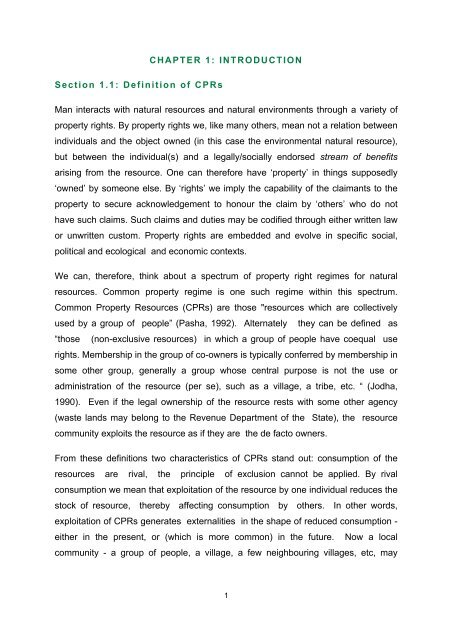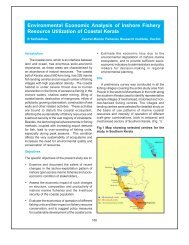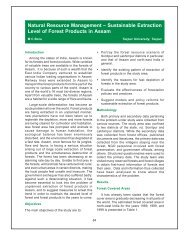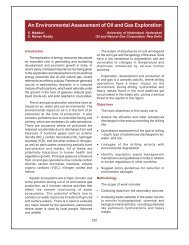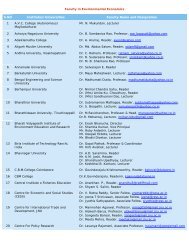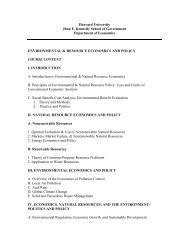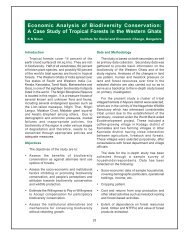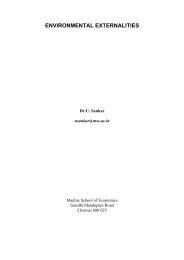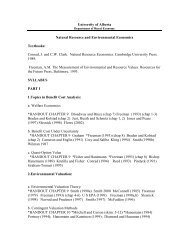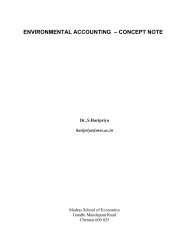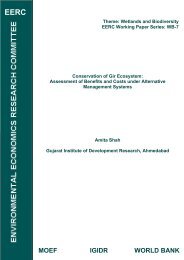PDF 3.08 MB
PDF 3.08 MB
PDF 3.08 MB
You also want an ePaper? Increase the reach of your titles
YUMPU automatically turns print PDFs into web optimized ePapers that Google loves.
Section 1.1: Definition of CPRs<br />
CHAPTER 1: INTRODUCTION<br />
Man interacts with natural resources and natural environments through a variety of<br />
property rights. By property rights we, like many others, mean not a relation between<br />
individuals and the object owned (in this case the environmental natural resource),<br />
but between the individual(s) and a legally/socially endorsed stream of benefits<br />
arising from the resource. One can therefore have ‘property’ in things supposedly<br />
‘owned’ by someone else. By ‘rights’ we imply the capability of the claimants to the<br />
property to secure acknowledgement to honour the claim by ‘others’ who do not<br />
have such claims. Such claims and duties may be codified through either written law<br />
or unwritten custom. Property rights are embedded and evolve in specific social,<br />
political and ecological and economic contexts.<br />
We can, therefore, think about a spectrum of property right regimes for natural<br />
resources. Common property regime is one such regime within this spectrum.<br />
Common Property Resources (CPRs) are those "resources which are collectively<br />
used by a group of people” (Pasha, 1992). Alternately they can be defined as<br />
“those (non-exclusive resources) in which a group of people have coequal use<br />
rights. Membership in the group of co-owners is typically conferred by membership in<br />
some other group, generally a group whose central purpose is not the use or<br />
administration of the resource (per se), such as a village, a tribe, etc. “ (Jodha,<br />
1990). Even if the legal ownership of the resource rests with some other agency<br />
(waste lands may belong to the Revenue Department of the State), the resource<br />
community exploits the resource as if they are the de facto owners.<br />
From these definitions two characteristics of CPRs stand out: consumption of the<br />
resources are rival, the principle of exclusion cannot be applied. By rival<br />
consumption we mean that exploitation of the resource by one individual reduces the<br />
stock of resource, thereby affecting consumption by others. In other words,<br />
exploitation of CPRs generates externalities in the shape of reduced consumption -<br />
either in the present, or (which is more common) in the future. Now a local<br />
community - a group of people, a village, a few neighbouring villages, etc, may<br />
1


